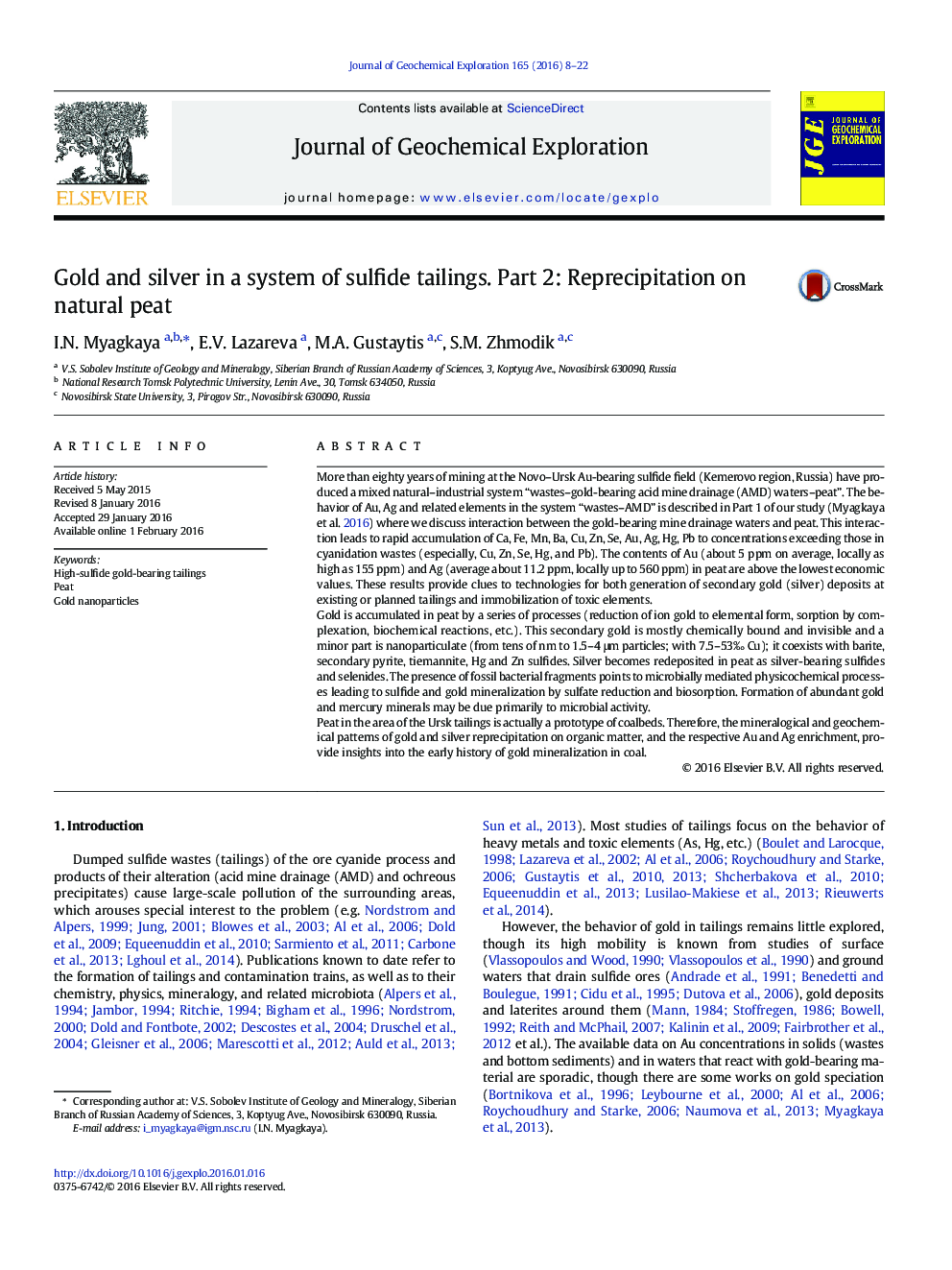| کد مقاله | کد نشریه | سال انتشار | مقاله انگلیسی | نسخه تمام متن |
|---|---|---|---|---|
| 4456920 | 1620894 | 2016 | 15 صفحه PDF | دانلود رایگان |
• Gold and silver become reprecipitated on natural peat upon its reaction with gold-bearing AMD waters.
• Peat is an active sorbent of gold and silver from AMD waters.
• Most of secondary gold is chemically bound and invisible and a minor part is nanoparticulate.
More than eighty years of mining at the Novo–Ursk Au-bearing sulfide field (Kemerovo region, Russia) have produced a mixed natural–industrial system “wastes–gold-bearing acid mine drainage (AMD) waters–peat”. The behavior of Au, Ag and related elements in the system “wastes–AMD” is described in Part 1 of our study (Myagkaya et al. 2016) where we discuss interaction between the gold-bearing mine drainage waters and peat. This interaction leads to rapid accumulation of Ca, Fe, Mn, Ba, Cu, Zn, Se, Au, Ag, Hg, Pb to concentrations exceeding those in cyanidation wastes (especially, Cu, Zn, Se, Hg, and Pb). The contents of Au (about 5 ppm on average, locally as high as 155 ppm) and Ag (average about 11.2 ppm, locally up to 560 ppm) in peat are above the lowest economic values. These results provide clues to technologies for both generation of secondary gold (silver) deposits at existing or planned tailings and immobilization of toxic elements.Gold is accumulated in peat by a series of processes (reduction of ion gold to elemental form, sorption by complexation, biochemical reactions, etc.). This secondary gold is mostly chemically bound and invisible and a minor part is nanoparticulate (from tens of nm to 1.5–4 μm particles; with 7.5–53‰ Cu); it coexists with barite, secondary pyrite, tiemannite, Hg and Zn sulfides. Silver becomes redeposited in peat as silver-bearing sulfides and selenides. The presence of fossil bacterial fragments points to microbially mediated physicochemical processes leading to sulfide and gold mineralization by sulfate reduction and biosorption. Formation of abundant gold and mercury minerals may be due primarily to microbial activity.Peat in the area of the Ursk tailings is actually a prototype of coalbeds. Therefore, the mineralogical and geochemical patterns of gold and silver reprecipitation on organic matter, and the respective Au and Ag enrichment, provide insights into the early history of gold mineralization in coal.
Journal: Journal of Geochemical Exploration - Volume 165, June 2016, Pages 8–22
